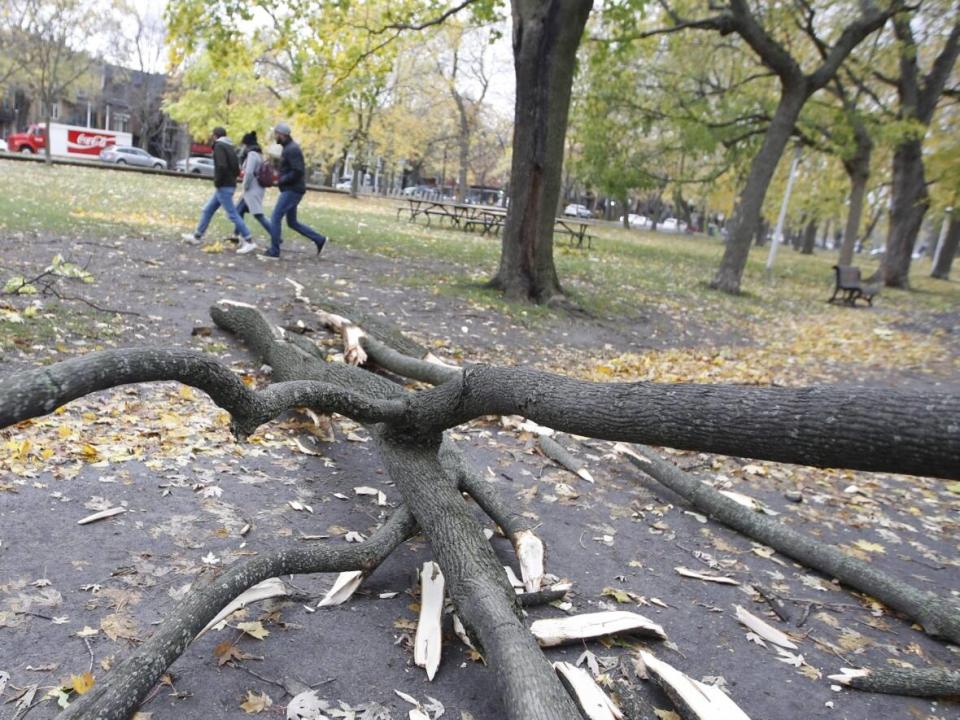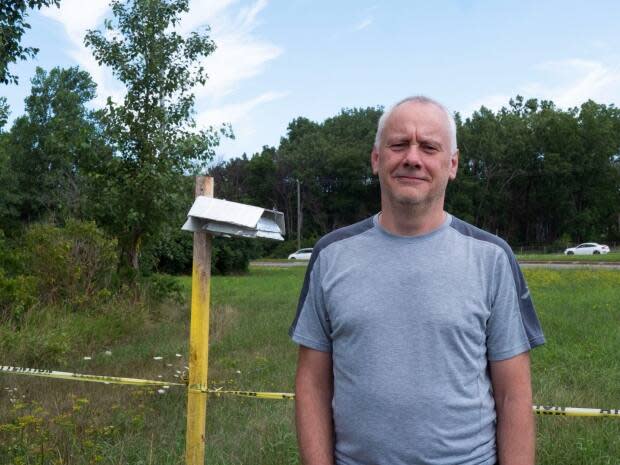Insufficient watering killed 60 per cent of trees in Montreal borough initiative

About 60 per cent of young trees planted as part of a green initiative in Montréal-Nord died because the borough didn't properly water them, according to the city's auditor general.
The trees were part of the city's Un enfant, un arbre (One child, one tree) initiative, which began in 2013. Citizens can apply to have a tree planted in their neighbourhood to celebrate the birth or adoption of a child.
The report, released Tuesday, said "a lack of sufficient watering" meant that 60 per cent of those trees, planted in public spaces in Montréal-Nord, died, representing "a loss of both investment and benefits to the ecosystem."
The trees in the program weren't the only ones struggling. From 2015 to 2021, the annual mortality rate of city trees in Montréal-Nord was 20 per cent, the report said.
Last year, the mortality rate for young trees alone remained high — at 15 per cent — "primarily due to insufficient watering, especially during the periods of excessive heat in July 2021," it reads.
"In short, current practices [in Montreal] put the life expectancy of public trees at risk," it concluded.
Areas in need of green
The report noted that Montréal-Nord didn't have a watering program for young trees until 2017.
Under its current plan, the borough waters newly planted trees weekly for two years. Saint-Léonard is the only borough audited who waters less than that, watering weekly but only for the first year after planting.
In contrast, the city's park service, the Service des grands parcs, du Mont‑Royal et des sports, waters young trees every two weeks for the first three years after planting. Saint-Laurent borough also waters every two weeks, for five years.
It's not the first time the lack of greenery has been noticed in areas like Montréal-Nord.
A CBC News analysis of data from the City of Montreal and Statistics Canada shows the higher the median income of a neighbourhood, the more extensive the tree cover.
That's in part because boroughs with more valuable homes have more property tax revenue to plant and care for more trees.
That question of care is paramount, said Alain Paquette, a biological science professor at the Université du Québec à Montréal (UQAM) and urban forest researcher.
"We have to stop thinking that we will solve the problem by planting trees," he said. "We should take care of the ones we already have, which we don't."

Paquette said trees need to be cared for after they're planted to ensure they thrive, especially in an urban environment. Snow removal operations, or cyclists locking their bikes to trees, are both common problems that can damage a young sapling, he said.
But the issue isn't unique to Montréal-Nord. Paquette said the quality of tree care varies widely from borough to borough.
"There's boroughs in the city, which are known for having people and policies who are really efficient, who are dedicated to this work. In others, it's not quite the case," he said.
City-wide recommendations
Taking into account the benefits of trees and how expensive a dead trees can be to remove, "appropriate and sufficient maintenance" is essential both for the citizens who will benefit from the greenery, and the city that will shoulder the cost, the report said.
It recommends a city-wide standard defining "optimal maintenance practices" for the trees.
More specifically, it also recommended that eight boroughs — Anjou, Montréal-Nord, Rivière-des-Prairies–Pointe-aux-Trembles, Rosemont–La Petite-Patrie, Saint-Léonard, Saint-Laurent, Le Sud-Ouest and Ville-Marie — work with the city's park service to commit to plans to better the care of their trees.
In a statement, the city of Montreal said it accepted the recommendations, and will work to develop its own maintenance guide in addition to helping boroughs create their tree plans.

 Yahoo Movies
Yahoo Movies 